| Part 1 | Part 2 | Part 3 |
Originally published on the Extra Life Community website
Edited by Jack Gardner
Since its release in 2005, Final Fantasy VII: Advent Children has attracted negative reviews about its story, characters, fight scenes, dialog, and fan service. For fans of the film like me, defending it seemed an unthinkable, if not impossible, task. This made it all the more surprising when I dared to look closer at these criticisms and found baseless claims and exaggerations instead. The previous article in this series refuted arguments that Advent Children doesn’t contain a strong story or compelling characters by outlining the story it tells, examining the protagonist Cloud and his relationships, and exploring some of the film’s many themes. Critics may be quick to point out that even if the film contains a story, deeply flawed storytelling obscures it. They say Advent Children contains an excessive amount of meaningless action scenes strung together with weak and brief dialog. In reality, its action scenes are as important to understanding the story and world as the characters’ efficient and purposeful conversations.
Many critics of Advent Children claim that the film’s excessive fight scenes contain only action-packed fan service. These visually stunning scenes allegedly have nothing at stake, no indication that characters can die, no physical limitations, no change in energy from fight to fight, and no purpose in the story. To the contrary, the fight scenes build the world, advance the story, and develop the characters in parallel with the battle. The visuals not only look wonderful but also contain a wealth of information.
Advent Children doesn’t use the physics that we know, but it still has rules that it defines and follows. What the characters can do and their limitations are established in the fight scenes. In the first battle of the movie, the antagonist Kadaj sends his brothers Loz and Yazoo to fight Cloud. The combatants introduce motorcycle battles, summoned monsters, and physics-defying action. Cloud gets his goggles shot off his face at point blank, but the scratch it leaves behind hints for the rest of the film that he isn’t invincible. The following fight between Loz and Cloud’s friend Tifa demonstrates the characters’ high jumping abilities and superhuman strength. While Tifa can take wooden benches to the face, electrocution is her weakness as is being punched with enough force to destroy a concrete pillar. Next, Cloud has a mystical weapon battle with Kadaj’s gang where we see the magical and destructive capabilities of materia. Cloud blocks bullets and magic with a sword, but he tires rather quickly. These first three scenes also establish that the bad guys pose a threat because Cloud and Tifa lose them all.
The tide changes during the fight with the monster Bahamut, which introduces friendship as an element of combat. Cloud’s friends demonstrate their differing skills and how they compensate for one another’s weaknesses. Cait Sith is quite useless, riding on Red XIII’s back the entire fight, but he provides moral support and comic relief. Barret saves Cloud’s foster son Denzel, but he can’t high jump and periodically needs to be saved himself. Red XIII saves Cid from plowing face-first into a pillar. Cid saves Yuffie from an energy blast. Cloud saves Barret from falling debris. And all of them together with divine assistance from Aerith help Cloud defeat Bahamut, the first win of the movie.
Cloud, Loz, and Yazoo’s motorcycle chase and the following sword fight between Cloud and Kadaj cement these rules in place by using every element that we’ve learned about from all previous battles: high jumping, motorcycle battles, materia, divine assistance, friendship power, etc. In the final battle, Cloud’s true enemy Sephiroth reveals that he has abilities that we’ve never seen before. He can fly and apparently manipulate the weather without materia. Cloud, however, is still bound by the rules. He tires easily, feels afraid and uncertain, and requires his friends’ assistance to survive.
The film doesn’t define how characters die, but it does use other means to endanger them. Because the characters don’t often give the bad guys the chance to injure them, danger mainly comes from their reactions and emotions. Falling debris scare Barrett and Cloud. Cloud fears separation from his sword in battles, and geostigma pains him. His friends flee and exclaim from various threats during the battle with Bahamut. These human reactions, the humanity of Cloud’s personality and struggles at the center of the film, the fantastic action scenes, and the lack of information combine to leave us in suspense. How human are these characters? Withholding violent acts actually makes Sephiroth stabbing Cloud and Yazoo shooting him at the end of the film more shocking. Even when Cloud survives, the movie heavily implies that it was only because Aerith helped him.
Advent Children’s action scenes are scenes, integral to advancing the plot and developing the characters. Loz, Kadaj, and Yazoo introduce themselves in the first fight scene by toying with Cloud, which shows their childish personalities. By the end, Cloud still doesn’t know what they want, but he knows that they pose a threat. Tifa’s battle with Loz begins with neither of them taking each other seriously, but by the end, Loz easily outmatches Tifa and kidnaps Barret’s daughter Marlene. The next battle features Cloud trying to save the city’s orphans, but it ends in miserable failure, confirming to him his uselessness. After regaining his confidence in the fight with Bahamut, Cloud attempts to show in his sword fight with Kadaj that he doesn’t need his friends while Kadaj attempts to prove that he doesn’t need Sephiroth.
Each battle also heightens the stakes. In the first action scene of the film, Cloud must fight only to save himself. Tifa then fights Loz to save herself and Marlene. After that, Cloud fights Kadaj’s gang to save the city’s orphans. Cloud and his friends fight Bahamut to protect the entire city. Then, Cloud chases Kadaj to prevent him from using Jenova’s remains to resurrect Sephiroth, which could lead to the world’s destruction. Finally, Cloud fights Sephiroth, a god-like being, to save the world.
The cinematic choices during fights make the choreography a spectacle, which is an important aspect of any action movie, but they also define the characters’ locations in space, show what they’re doing, and convey their feelings and thoughts. Compare the shots in Advent Children to a bad action movie full of shaky camera angles, two-second-long shots, and close-ups (e.g. Kingsglaive: Final Fantasy XV) where it’s difficult to tell what’s happening or why. Advent Children does use disorienting camera work, such as in Cloud’s battle with Sephiroth, but only to convey confusion and fear. Otherwise, it shows almost everything, including some imaginative choreography that compliments the characters and story.
Combatants don’t shout cheesy catchphrases to announce what they feel or what they want to accomplish. They communicate this information almost entirely through visuals. The following are just a few examples. During Cloud’s attempt to rescue the orphans from Kadaj’s gang, Cloud shifts his attention from Loz and Yazoo to Kadaj, his true target. The camera zooms in on Kadaj’s face, and Cloud attacks. In the motorcycle chase later in the movie, Kadaj flees from Cloud with Jenova’s remains in hand. He takes the upper road when the superhighway splits. Loz rides up alongside Cloud and attacks, preventing him from taking the same path. In the final fight scene, Sephiroth darkens the sky with a flick of his wrist; Cloud grimaces fearfully and grips his sword tighter. The characters seem to have conversations without saying anything at all. Only so much can be conveyed through facial expressions and body language, but they say more than: “I’m going to kill you!” “No, I’m going to kill you!”
Advent Children explains what it can’t show with clever and to-the-point dialog that reviewers complain is terribly written. Sure, it has weaknesses, but overall, the dialog is some combination of real, efficient, informative, and thought-provoking. The characters don’t sobbingly spew their backstory in a futile attempt to make us care, explain concepts that everyone in the scene already knows, inject catchphrases into everything they do, or announce what they will do instead of, you know, just doing it. Characters don’t have much chance to sound insincere because they rarely speak. And when they do converse, they do so purposefully. Make fun of “dilly-dally, shilly-shally” all you want; it’s part of a real conversation about a real-life problem said much more efficiently.
The majority of the dialog in the film exists to explain Final Fantasy VII concepts, but it performs double duty by developing the characters at the same time. In a scene near the beginning of the movie, for example, Cloud and Rufus talk about the Shinra Power Company, geostigma, Jenova, and Sephiroth. The tone of the conversation simultaneously shows Cloud’s love-hate relationship with Shinra. Cloud treats Rufus coldly, constantly cutting him off and questioning him. He jabs at Rude and Reno, who seem like loveable goofs, and hesitates when Rufus suggests that Shinra wants to atone for its past sins.
Some dialog simply provokes the audience to think about the film beyond its superficial action-oriented, Final Fantasy VII-enhanced plot. For example, Cloud’s friend Vincent asks, “Cloud, are you sure this is about fighting?” Sephiroth says, immediately before he disappears, “I will never be a memory.” And Cloud ends the film with, “I know. I’m not alone. Not anymore.” A film adorned in fan service almost requires lines like this if it wants to make the audience aware that it has anything important to say.
The dialog stumbles most when it explains concepts and does nothing much else, but even then, it’s efficient. At one point, Kadaj obviously explains materia as if nobody in the scene knows already, but the film had to explain it at some point and doesn’t spend much time on it. Compare it to the director’s cut, Final Fantasy VII: Advent Children Complete, where this scene turns into two minutes of equally cringe-worthy dialog featuring Kadaj and Loz explaining everything they’re about to do and re-explain.
The overview of Final Fantasy VII at the beginning of the film receives criticism for existing, not explaining enough, and containing awkward dialog. Overviews are necessary refreshers for newbies and veterans alike and difficult to write well in general, not a fault of Advent Children in particular. Like the rest of the film’s spoken information, it provides the bare minimum needed to understand the plot.
Advent Children’s fight scenes look spectacular because they contain so much information about the story, characters, and world. The script intentionally keeps the dialog short to highlight where the story really shines in the film’s visuals and the characters’ actions. This explains how Advent Children tells its story, but it doesn’t explain why it took over a decade for anyone to recognize it. Why has no one ever discussed Advent Children’s use of visual language if it’s as excellent as I claim? Is this film so opaque? The final part of this series will examine the misconceptions surrounding Final Fantasy VII: Advent Children that stifled the conversation about its story and storytelling techniques before it even began.
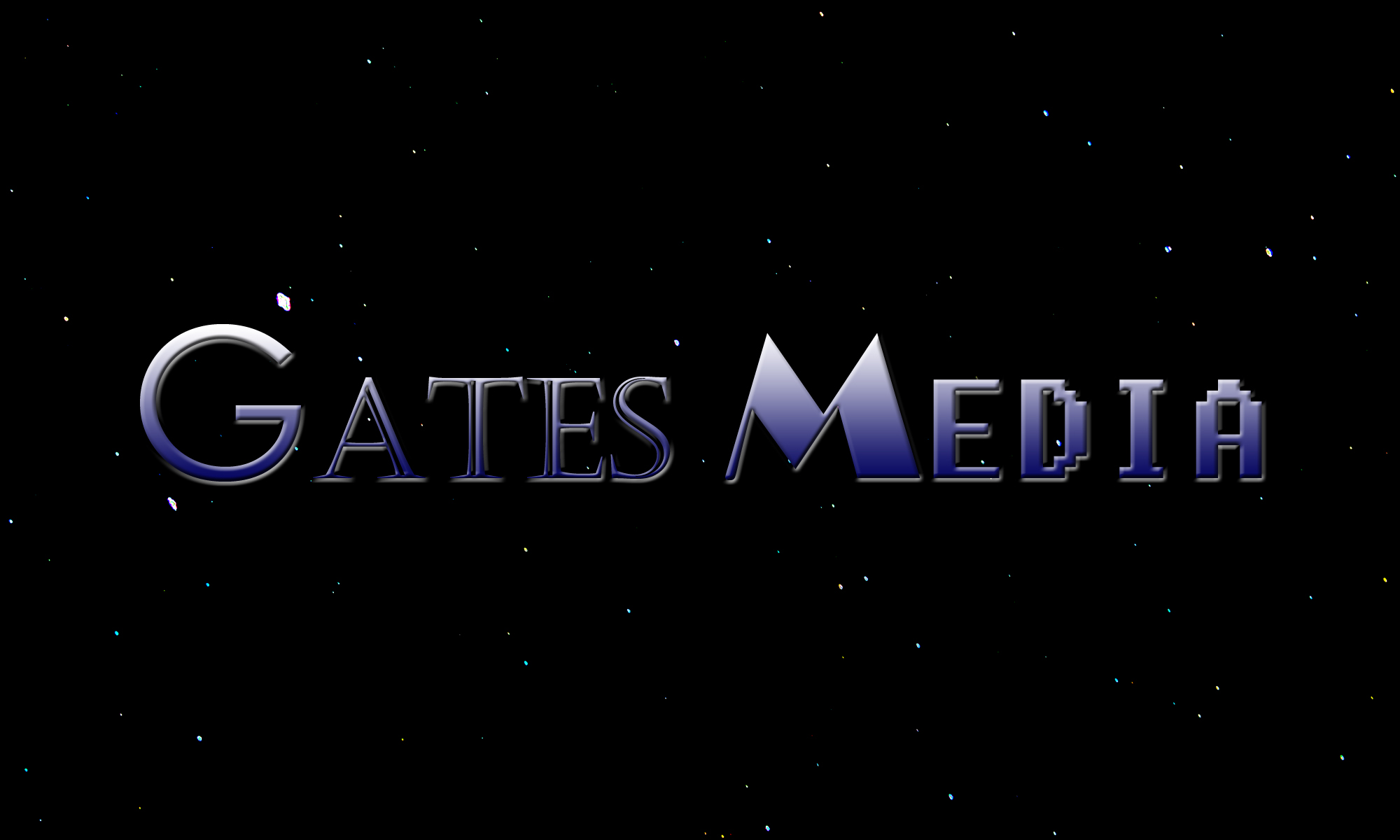

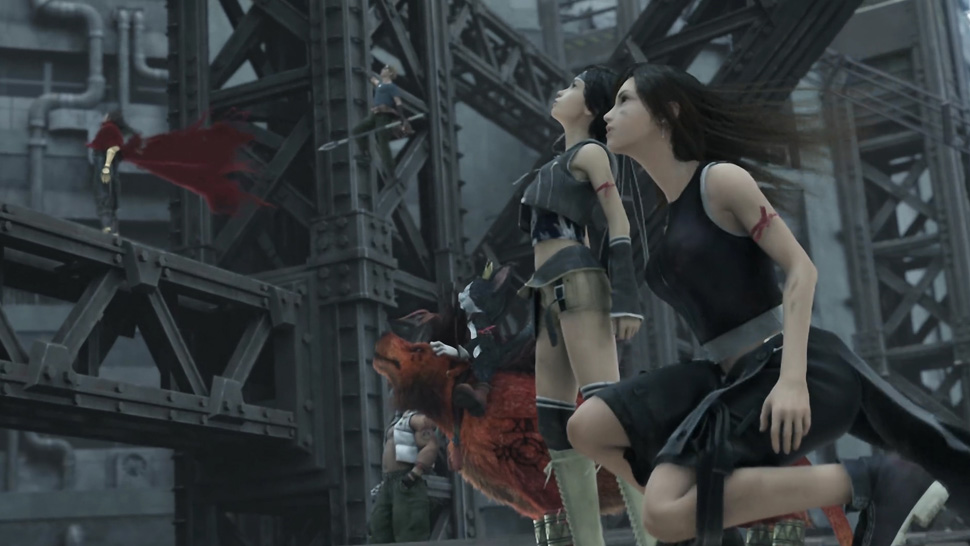
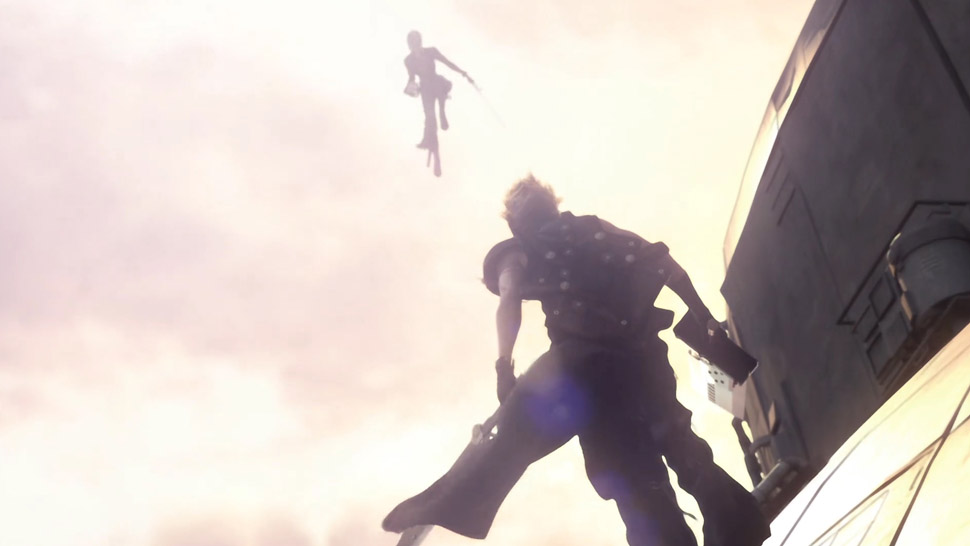
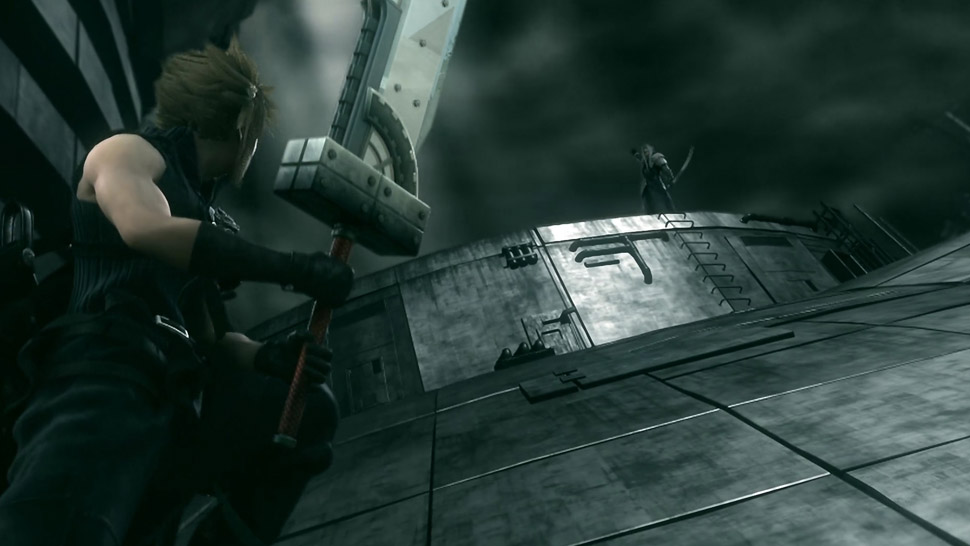
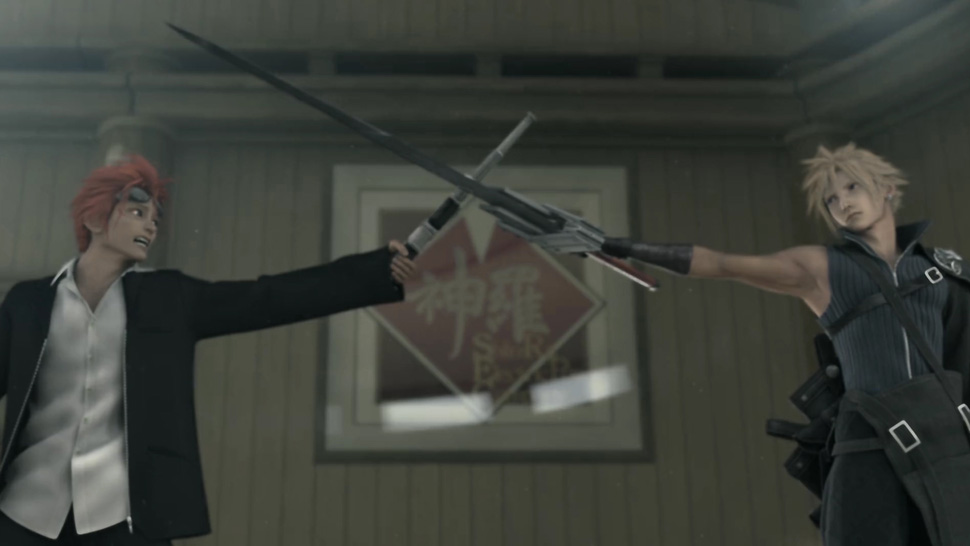
3 Replies to “Advent Children: What’s Beneath the Fan Service (Part 2)”
Comments are closed.